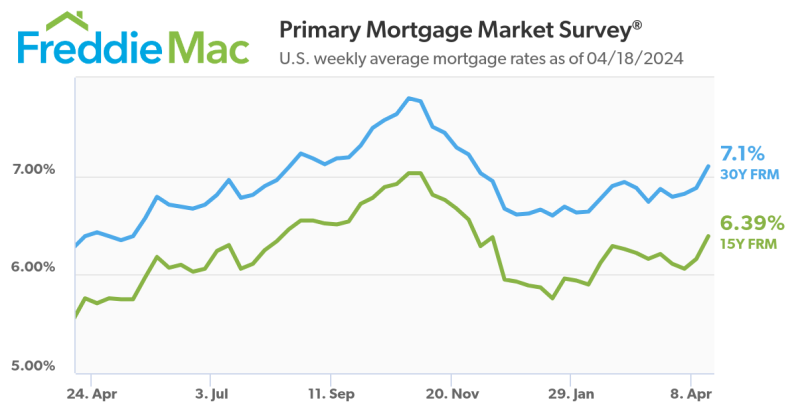Advertisement
MBA finds commercial and multifamily debt outstanding declined 2.8 percent in 2009

The level of commercial/multifamily mortgage debt outstanding decreased by 1.7 percent in the fourth quarter, to $3.4 trillion, according to the Mortgage Bankers Association (MBA) analysis of the Federal Reserve Board Flow of Funds data. On a year-over-year basis, the amount of mortgage debt outstanding at the end of 2009 was $99 billion lower than at the end of 2008, a decline of 2.8 percent.
Declines were driven by drops in commercial and multifamily mortgages held in commercial mortgage-backed securities (CMBS) and construction loans held by banks and thrifts. The $99 billion year-over-year decline was the largest nominal dollar decline recorded in the series, but the percentage decline was not. The largest year-over-year percentage decline was a drop of 5.5 percent between Q2 1992 and Q2 1993.
The $3.4 trillion in commercial/multifamily mortgage debt outstanding recorded by the Federal Reserve was $58 billion lower than the third quarter 2009 figure. Multifamily mortgage debt outstanding fell to $897 billion, a decrease of $11 billion or 1.2 percent from the third quarter.
"Payoffs and pay-downs of outstanding mortgages are exceeding new originations," said Jamie Woodwell, MBA's vice president of commercial real estate research. "Driving the decline was the CMBS market, with essentially no new mortgages coming in, and banks and thrifts, with declines in their construction-related holdings."
The Federal Reserve Flow of Funds data summarizes the holdings of loans or, if the loans are securitized, the form of the security. For example, many life insurance companies invest both in whole loans for which they hold the mortgage note (and which appear in this data under Life Insurance Companies) and in commercial mortgage-backed securities (CMBS), collateralized debt obligations (CDOs) and other asset-backed securities (ABS) for which the security issuers and trustees hold the note (and which appear here under CMBS, CDO and other ABS issuers).
Commercial banks continue to hold the largest share of commercial/multifamily mortgages, $1.51 trillion, or 45 percent of the total. Many of the commercial mortgage loans reported by commercial banks however, are actually "commercial and industrial" loans to which a piece of commercial property has been pledged as collateral. It is the borrower's business income - not the income derived from the property's rents and leases--that drives the underwriting, pricing and performance of these loans. An MBA Research PolicyNote found that among the top 10 commercial real estate bank lenders, 48 percent of their aggregate balance of commercial (non-multifamily) real estate loans were related to owner-occupied properties. Since the other loans reported here are generally income property loans, meaning that the income primarily comes from rents, the commercial bank numbers are not comparable.
Additionally, the Federal Reserve estimate of commercial and multifamily mortgage debt outstanding includes an estimate of construction loans held by banks and thrifts. Based on data from the FDIC, between Q4 2008 and Q4 2009, the level of commercial and multifamily mortgage debt (excluding construction loans) held by banks and thrifts increased by $30 billion, meaning the $54 billion decline in the Fed's estimate of bank/thrift-held debt was driven by a decline of $80 billion in construction loan holdings.
CMBS, CDO and other ABS issues are the second largest holders of commercial/multifamily mortgages, holding $690 billion, or 20 percent of the total. Life insurance companies hold $307 billion, or 9 percent of the total, and savings institutions hold $184 billion, or 5 percent of the total.
Government-sponsored enterprises (GSEs), agency-backed mortgage pools and GSE-backed mortgage pools, including Fannie Mae, Freddie Mac and Ginnie Mae, hold $198 billion in multifamily loans that support the mortgage-backed securities they issued and an additional $165 billion in "whole" loans in their own portfolios. This represents a total share of 11 percent of outstanding commercial/multifamily mortgages. As noted above, many life insurance companies, banks and the GSEs purchase and hold a large number of CMBS, CDO and other ABS issues. These loans appear in the CMBS, CDO and other ABS category previously referenced.
Looking just at multifamily mortgages, the GSEs and Ginnie Mae hold the largest share of multifamily mortgages, with $198 billion in federally related mortgage pools and $165 billion in their own portfolios or 40 percent of the total multifamily debt outstanding. They are followed by commercial banks with $210 billion, or 23 percent of the total. CMBS, CDO and other ABS issuers hold $108 billion, or 12 percent of the total; state and local governments with $65 billion, or seven percent of the total; savings institutions with $60 billion, or seven percent of the total; and life insurance companies with $50 billion, or six percent of the total.
In the fourth quarter of 2009, commercial banks saw the largest decrease in dollar terms in their holdings of commercial/multifamily mortgage debt--a decrease of $26 billion or two percent. CMBS, CDO, and other ABS issues decreased their holdings of commercial/multifamily mortgages by $19 billion or three percent. Savings institutions decreased their holdings of commercial/multifamily mortgages by $7 billion or three percent. REITs decreased their holdings of commercial/multifamily mortgages by $2 billion or seven percent. As mentioned earlier, the decline in bank and thrift holdings was driven by a drop in construction loans, many of them for the development of single-family homes.
In percentage terms, nonfinancial corporate business saw the largest decrease in their holdings of commercial/multifamily mortgages, a drop of 51 percent. REITS saw their holdings decrease by seven percent.
The $11 billion decrease in multifamily mortgage debt outstanding between the third quarter and fourth quarter 2009 represents a 1 percent decrease. In dollar terms, commercial banks saw the largest decrease in their holdings of multifamily mortgage debt, a decrease of $7 billion, or three percent. Savings institutions decreased their holdings of multifamily mortgage debt by $4 billion, or six percent. CMBS, CDO, and other ABS issues decreased by $2 billion, or two percent. Agency and GSE-backed mortgage pools saw the biggest increase in their holdings of multifamily mortgage debt by $3 billion or two percent.
In percentage terms, nonfinancial corporate business recorded the biggest decrease in their holdings of multifamily mortgages at 51 percent. Private pension funds saw the biggest increase of seven percent.
Between December 2008 and December 2009, CMBS, CDO and other ABS issues saw the largest decrease in dollar terms in their holdings of commercial/multifamily mortgage debt--a decrease of $44 billion, or six percent. Commercial banks decreased their holdings of commercial/multifamily mortgages by $37 billion or two. GSEs experienced a net increase of $42 billion or 40.2 percent. Once again, the decline in bank and thrift holdings was driven by a drop in construction loans.
In percentage terms, nonfinancial corporate business saw the biggest decrease in their holdings of commercial/multifamily mortgages, a decrease of 80 percent. Private pension funds saw the biggest increase of 44 percent.
The $6 billion decrease in multifamily mortgage debt outstanding during 2009 represents a 0.7 percent decrease. In dollar terms, CMBS, CDO and ABS issues saw the largest decrease in their holdings of multifamily mortgage debt - a decrease of $6 billion or 5 percent. Commercial banks and savings institutions each saw a decrease of $5 billion in their holdings.
In percentage terms, nonfinancial corporate business recorded the biggest decrease in their holdings of multifamily mortgages, 80 percent, while private pension funds saw the biggest increase, 13 percent.
To view the report click here.
For more information, visit www.mortgagebankers.org.
About the author





